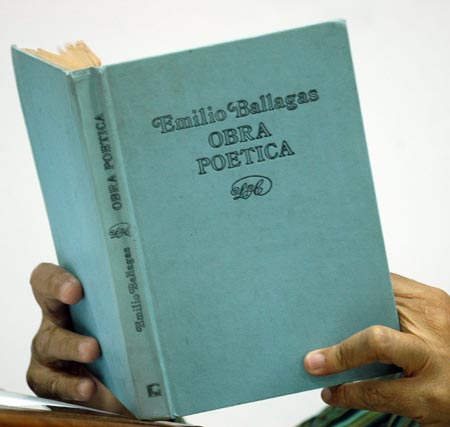4.1.1.17.2 The Negrista poetry of Emilio Ballagas (1908 – 1954)

In 1934, Emilio Ballagas published “Cuadernos de poesía negrista” (Notebooks of Black Poetry), one of the most important collections of Cuban poetry to have flowed through these channels, surpassed only by the work of Nicolás Guillén. Unlike Guillén, who writes his poems with the throbbing of his own Black blood, Ballagas writes from an external perspective, immersed in the enjoyment of color, culture, and Black language, but with reverence, sometimes touching on the theme of social preterition.
Ballagas’s Negrismo and Purismo share fundamental points of fruition; however, they necessarily distance themselves from Purismo, as they approach and delve into Black reality, beyond the abstractions typical of that movement. Some notes in the collection show that he managed to penetrate the sensibility hidden behind rumba and rum, as is the case with “Elegía de María Belén Chacón:
“…María Belén Chacón,
with your buttocks swaying,
from Camaguey to Santiago, from Santiago to Camaguey.
In the sky of rumba,
will never give light again
your constellation of curves.”
The elegiac and erotic tones are aptly intertwined in this poem, a kind of costumbrismo that doesn’t claim to be so, and this gives it an added value. Although Ballagas didn’t grasp the essence of what it meant to be Black in neocolonial Cuba, he did truly delight in the world of rumba and rum, where he sensed that love was made of flesh and spirit, alien to many of the false moral precepts of his social stratum.
In the texts “Para dormir a un negrito” and “Lavandera con negrito”, in addition to the verbal delight in a certain tasty pastiness of popular pronunciation, common in the Black world (with their own codes given the latent exclusion they suffered), a deep vein of tenderness can be appreciated, which sometimes acquires a certain irony to reveal to the whites their own perspective (the iterative use of “negrito”, instead of niño or another synonym).
As for eroticism, it reaches a high peak in Cuban literature with “El baile del papalote” (The Dance of the Kite), which has a song-like rhythm, as well as the seal of something intimate, very close to conversational:
“Put a brace on your shoulders,
mulatto, and in the navel.
You’re going to fly in the rumba.
I’m going to tip you up, I tell you!
(…)
Soar high, kite.
Stand up, stand up now.
Raise your buttocks, brunette,
the music has started!
(…)
Are you getting shingles?
You need a counterweight.
Let your tail down a little
so that you can dance serenely.
Open your white coat,
swimming in rumba, mermaid”
This erotic song to the black siren, along with the various passages in the work in which the childlike tone, the black children, and the skin color, “of rivers of pulp and honey,” also interact, weave together an emotional and authentic eulogy to the ancestral customs of this race with its irreducible charge of sensuality, in the context of difficult material conditions of existence, of which Ballagas also insinuates a denunciation.








